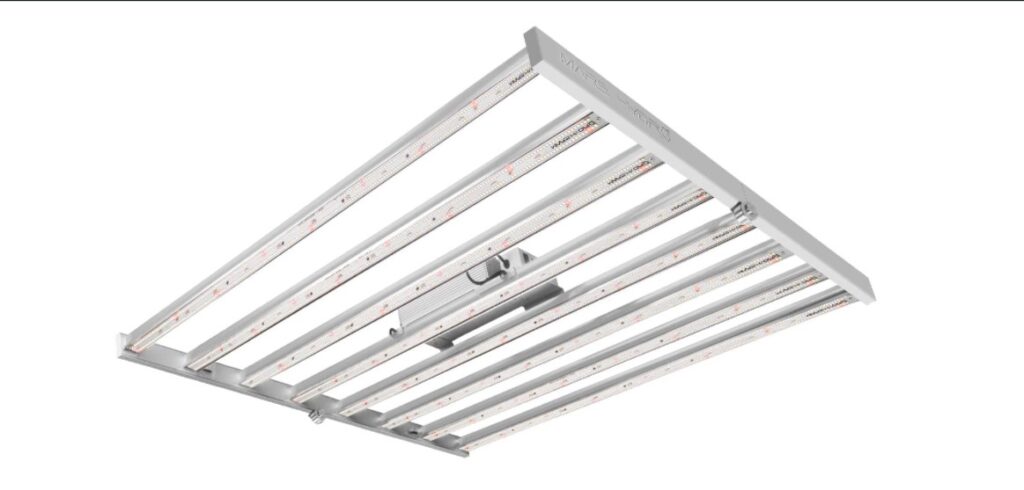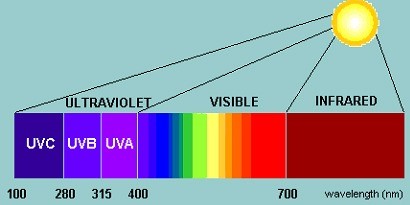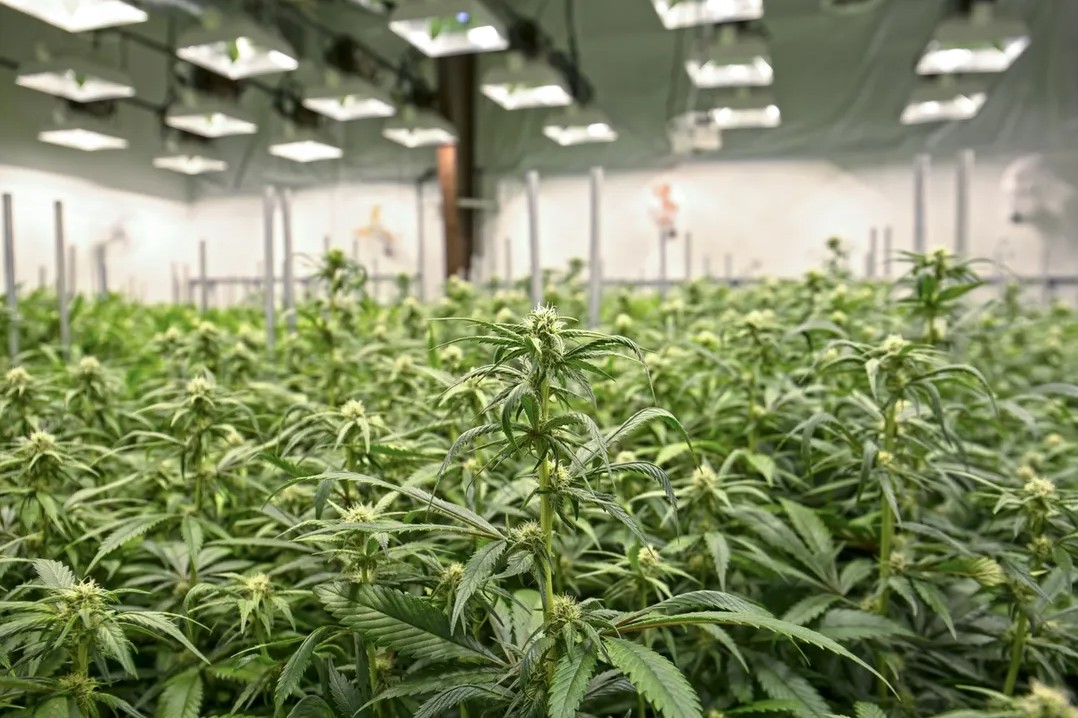The optimal lighting for cannabis plants – instructions
Lighting is essential when growing cannabis. The best light for growing weed is natural sunlight. It has the perfect mix of UV rays that plants crave, and the closer you are to the equator, the better those rays become.
Cannabis needs a lot of light to produce quality plants and buds. On average, a cannabis plant needs 12 hours of darkness each day to flower. In general, the more light your plants receive, the better and stronger they will grow, resulting in larger yields.
However, enough light is not the only problem. The main aspects to consider when creating the optimal environment for your plants are:
- The intensity of the light
- The color spectrum of light
- Lighting cycles (lamps on – off)
So when you grow outdoors, nature provides what is needed for the plant’s photoperiod. The colour spectrum is naturally regulated by the seasons and the lighting cycle is managed by day and night. Plants that grow near the equator have the shortest distance and the highest light intensity.
However, if you grow indoors, you can control the photoperiod in such a way that you can determine when your plant’s flower. Although sunlight is free and provides the perfect light for cannabis plants, some places on earth just don’t get enough sun for cannabis plants. If you live in such an area, it is probably best to grow your cannabis plants in a greenhouse with controlled lighting.

Best light for growing weed
While growing outdoors has its advantages, some growers prefer grow lights as they give them more control over their plants and the growing season. Just pointing random lightbulbs at your plants is not enough to get them to grow properly, however.
In order for the lighting to replace the sun, it must be provided with lamps that are specially made for growing cannabis.
How well your weed plant grows also depends on the way the grow lights are used. The best lamp types are metal halide lamps, high-pressure sodium lamps and now also special LED grow lamps .
Fluorescent lights are also good as they give off the best blue light for leaf growth. The MH lights work best during the veg phase, while the ND lights produce the best light during the flowering phase. The advantages of both lamps can best be used together.
| Plant stage | Time | Light Colour | Lighting Time |
| Seedling/cutting | 1-2 weeks | Blue | 24 hours of light |
| Vegetative phase | 3-5 weeks | Blue/Orange | 18 hours on / 6 hours off |
| Flowering phase | 7-10 weeks | Orange-red | 12 hours on / 12 hours off |
Best light for growing weed – Distance of the grow lamps
Lamp spacing is critical to the growth of your plants. Too far away and your cannabis won’t get the light it needs, but if these are too close you risk burning your precious plants.
During the seedling phase of your plant, keeping your lights at the right distance is crucial. One of the biggest mistakes growers make is placing the lights too far apart. This results in “long” or stretched plants, with long weak stalks (trunks) that cannot support the weight of the plant and can snap upside down.
These stretched stems occur when the seedlings stretch up to get more light.
The actual optimal distance of your lights will depend on the type of light you are using and your grow space. Here are some basic guidelines:
| Grow lamp power (MHL & NDL) | Nearest | The farthest away |
| 150 watts | 13 cm | 28 cm |
| 250 watts | 15 cm | 33 cm |
| 400 watts | 20 cm | 48 cm |
| 600 watts | 23 cm | 64 cm |
| 1000 watts | 28 cm | 79 cm |
Best light for growing weed – Light intensity
Plants that receive more light tend to grow better and produce higher yields – that’s a fact. However, it is also easy to oversaturate your plants with light and cause a slight burn. Or setting the lights too low so your plants don’t get enough light and ‘stretch’ or have stunted growth.
Light intensity or brightness can be measured in both lumens (lm) and lux:
Lumen – measures the amount of light emitted by a source. The higher the lumen, the brighter the light source.
Lux – measures the intensity of light falling on a surface. Since plants only absorb the light that falls on their surface, light values are usually measured in lux in grow guides.
Similar to lamp spacing, the optimal light intensity also depends on the type of light you want to use in the grow room . Below are some guidelines to help you get started:
| Plant stage | Maximum | Optimal | Minimum |
| Vegetative phase | ~70,000 lux | ~40,000lux | ~15,000lux |
| Flowering phase | ~85,000lux | ~60,000 lux | ~35,000lux |
Best light for growing weed – The color of the light
Many people don’t realize that light colour can affect the growth of your plants. Visible light actually behaves like a wave and exhibits different properties depending on the length of its waves.

For example, a light with a wavelength of 400 nm is recognized by the human eye as a purple colour.
Certain types of grow lights show a specific colour of light. For example, MH (Metal Halide) produces a predominantly blue colour light, while LED bulbs can isolate and emit a wide variety of colours.
In terms of plant growth, blue light is best used during the seedling and vegetative stages as it promotes the formation of chlorophyll, a chemical that helps plants grow faster and stronger. MH bulbs are often used for this as the blue light is meant to mimic the summer months when the sun is high in the sky.
Conversely, HPS lamps mimic the end of summer, with the sun’s rays passing through more of the Earth’s atmosphere and showing a red spectrum ideal for flowering cannabis plants.
Cannabis day and night cycle
The last but still important component of proper lighting is the actual time your plants are receiving light. Just like humans, plants need their sleep and cannot normally be illuminated by light 24 hours a day. Also, lighting cannabis can get expensive when it comes to power consumption. This is another reason why having a light cycle for your grow lights is a good idea.
You cannot keep cannabis plants under constant light as the plants will not bud without darkness. The only time the plants can have 24 hour light exposure is when they are in the seedling stage as they are still babies and need plenty of light to grow.
In the dark, plants produce the hormones needed for flowering. If the darkness is not disturbed by light, they continue to flower and growth is reduced to a minimum. You need a good combination of both to get a good harvest of marijuana.
For the duration of the vegetative phase, your plants need 18 hours of light and 6 hours of darkness. Once you are ready for your plants to flower, you can trigger their flowering phase by setting the light cycle to 12 hours of light and 12 hours of total darkness.
Don’t waste light
As previously mentioned, light is essential for growing high-quality cannabis plants. Exposure to light triggers photosynthesis in plants and if the right type or amount of light is not used, the plant will stall. Unfortunately, many growers miss out on high yields because their grow setup wastes light.
If quality isn’t reason enough to properly control your lighting, at least cost might be. Cannabis relies on the hours of light it receives to grow effectively. However, the cost of grow lights along with the electricity cost of using them can get quite expensive. Fortunately, there are some ways to increase effectiveness and thus reduce costs.
One of the easiest ways to do this is by making simple adjustments to your grow room / grow tent. Use reflective materials and keep the cannabis plants as close to the wall as possible. This means less light is wasted.
By carefully selecting the wall surface, you can increase the amount of light that plants receive. The reflective materials help reflect and direct the passing light towards the plants. It can also help illuminate areas that would otherwise be dark, providing light, warmth, and energy for the lower parts of the plants.
Reflective Walls
The material you use on the walls of your grow room / grow tent can give off a reflective surface for light. Use a light meter to measure how effective a particular material is. Measure by placing an opaque panel a few inches from the wall with the gauge underneath.
The golden rule is to make sure both measurements are the same distance from the light. If the light reflects off the different surfaces and is picked up by the meter, it should give different numbers for the two surfaces.
There should be a difference between these numbers – this difference shows how well your wall (or reflective material) reflects the light.
It should also be noted that the wavelength of radiant energy, also known as electromagnetic radiation, is 400 to 700 nm and EM radiation correlates with radiant thermal energy, which has a wavelength of 800 to 2000 nm.

Create reflective grow rooms
If your current walls aren’t reflective enough, you can fix that! Here is a list of the most commonly used materials for the walls of a cannabis grow room:
Mylar
This polyester film has a thickness of 1 to 2 mm and a high degree of reflection. There’s also a more expensive and hardier version called the Foylon that’s easy to clean. While mylar is less durable, it is far more reflective than Foylon. However, since Foylon is easy to clean, it may be a better solution in the long run.
The C3 anti-detection sheet is another mylar type with the same qualities as the 2mm thick one. In addition to being highly reflective, it is also infrared proof.
Good ventilation is required when using any of these materials due to the high level of reflection of radiant heat. Don’t create hotspots in the room when applying Mylar, Foylon or C3 sheeting to the walls. To avoid damage, you can also use Velcro when attaching the films to the walls. Make sure there are no air bubbles between the wall and the foils.
White colour
The plain white colour is also ideal for grow rooms. It’s reflective, low maintenance and no need to worry about hot spots. However, you should add fungicide when painting. The colour must be pure and flat.
Glossy colours and eggshell colours do not reflect as well. Also, make sure you don’t get dirty on the walls as this can reduce reflection. Titanium white is highly reflective but is rarely used due to its high price.
Special paint
Elastomeric paint is another surface treatment that allows good reflection. Because it’s rubberized, it’s pretty durable. Reflective roof coating such as Kool Seal is a fairly inexpensive variant of this paint. It forms an expanding and contracting rubbery coating that is suitable for almost any surface.
Plastic
The white or black plastic, known as panda plastic or “poly,” is an easy-to-clean surface for a temporary space. It doesn’t damage walls and helps avoid hotspots, but can melt if a light source is too close.
There are many options when it comes to the light of your cannabis plants. Everything from the type of light you use to the arrangement of the lights affects the growth of your cannabis plants. Getting your lighting system set up perfectly is essential for a big yield. However, it may take a few tries to get it right.
If you don’t want to experiment, you can also use a ready-made grow box. However, this is not essential if you want to set up an entire room for your grow. With practice, you can learn how to create the best lighting for cannabis plants.


It’s really a co᧐l and useful piece of info. Thank you for sharing.